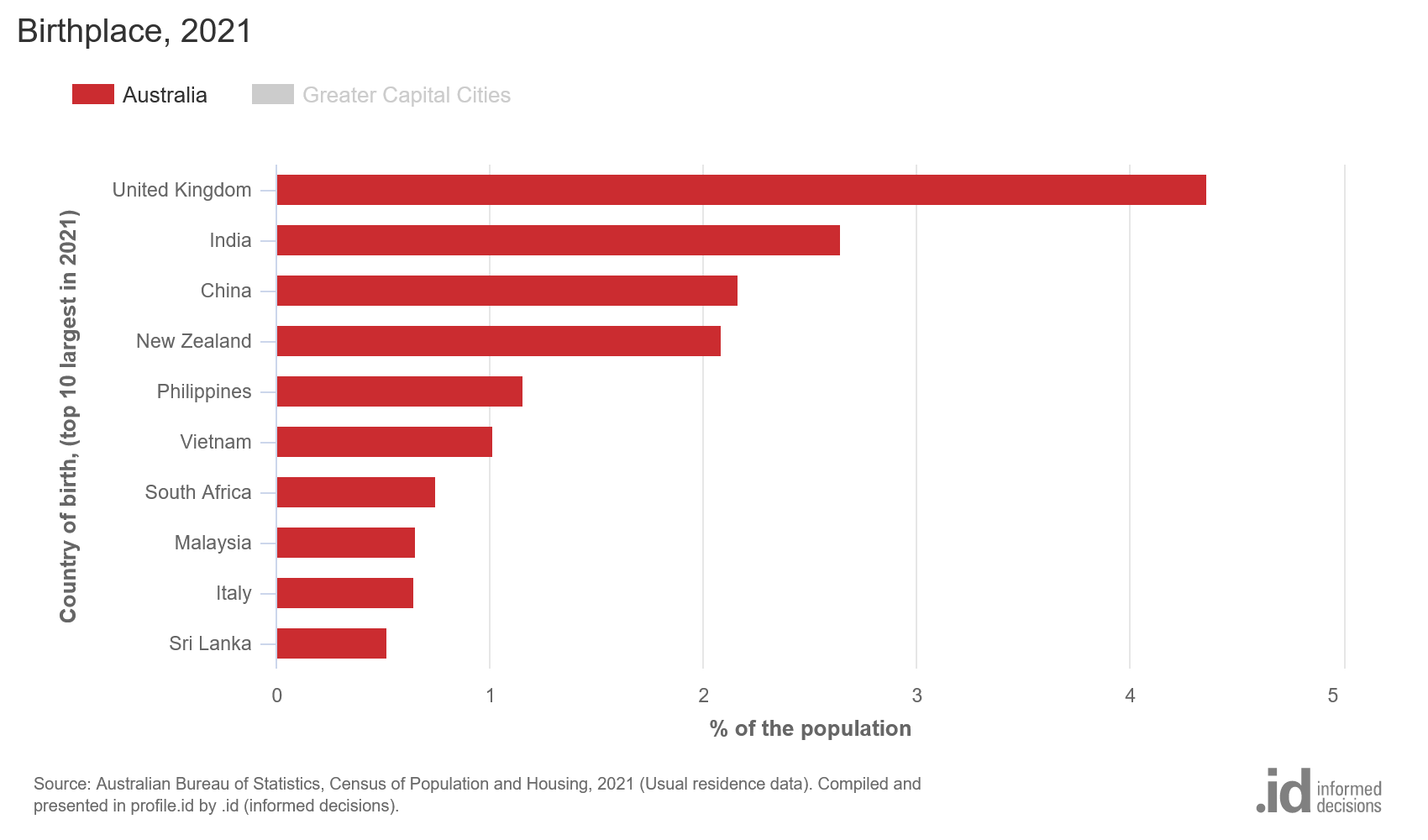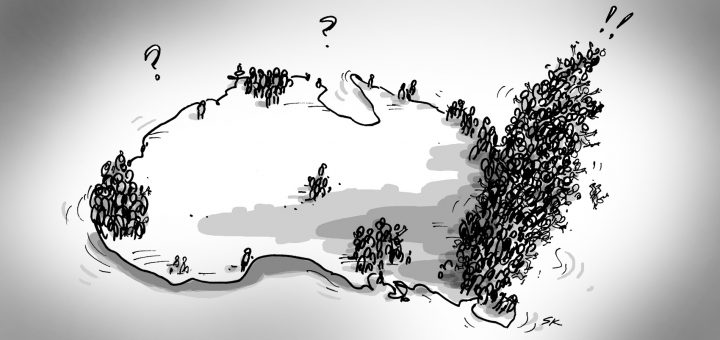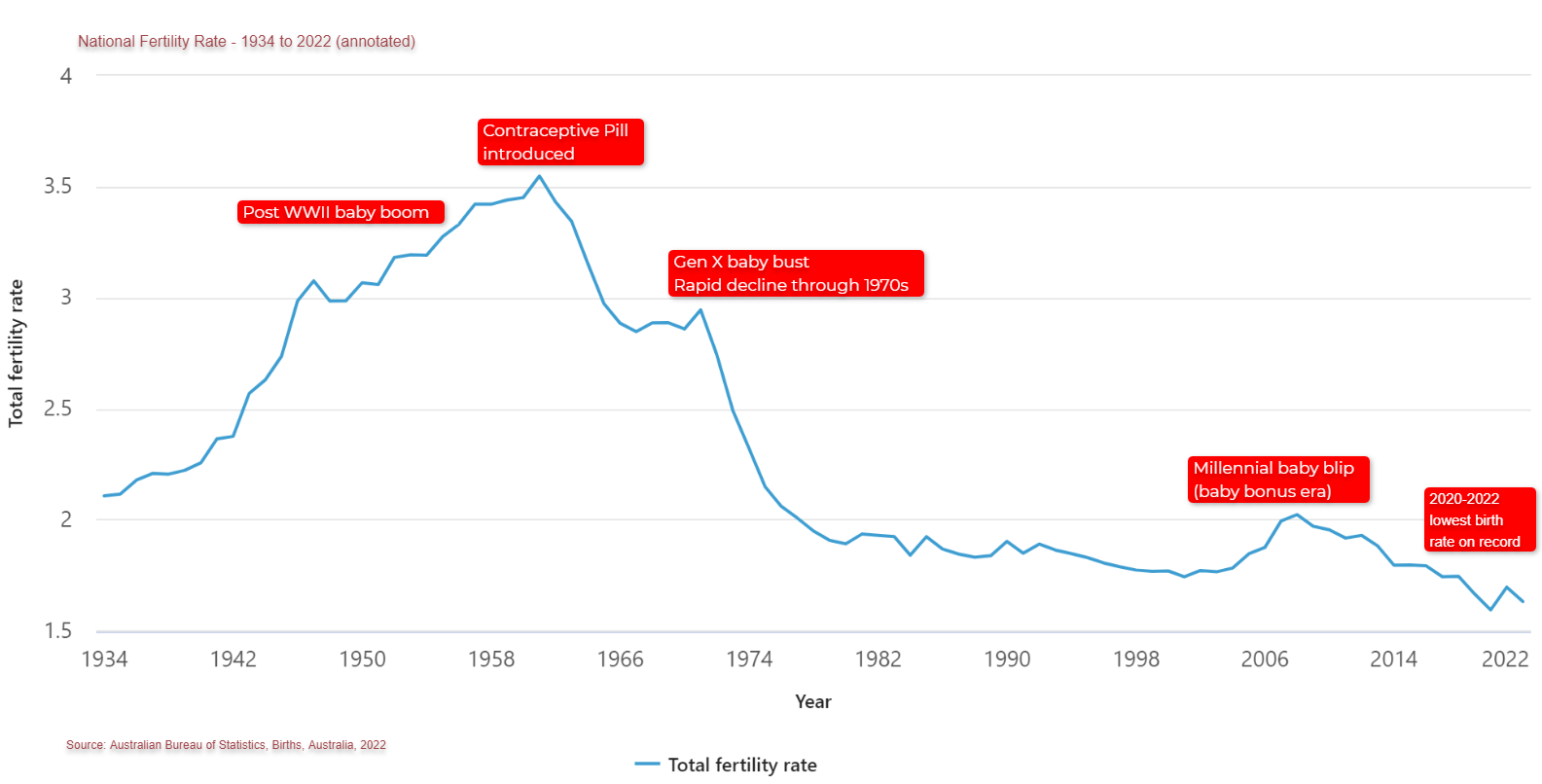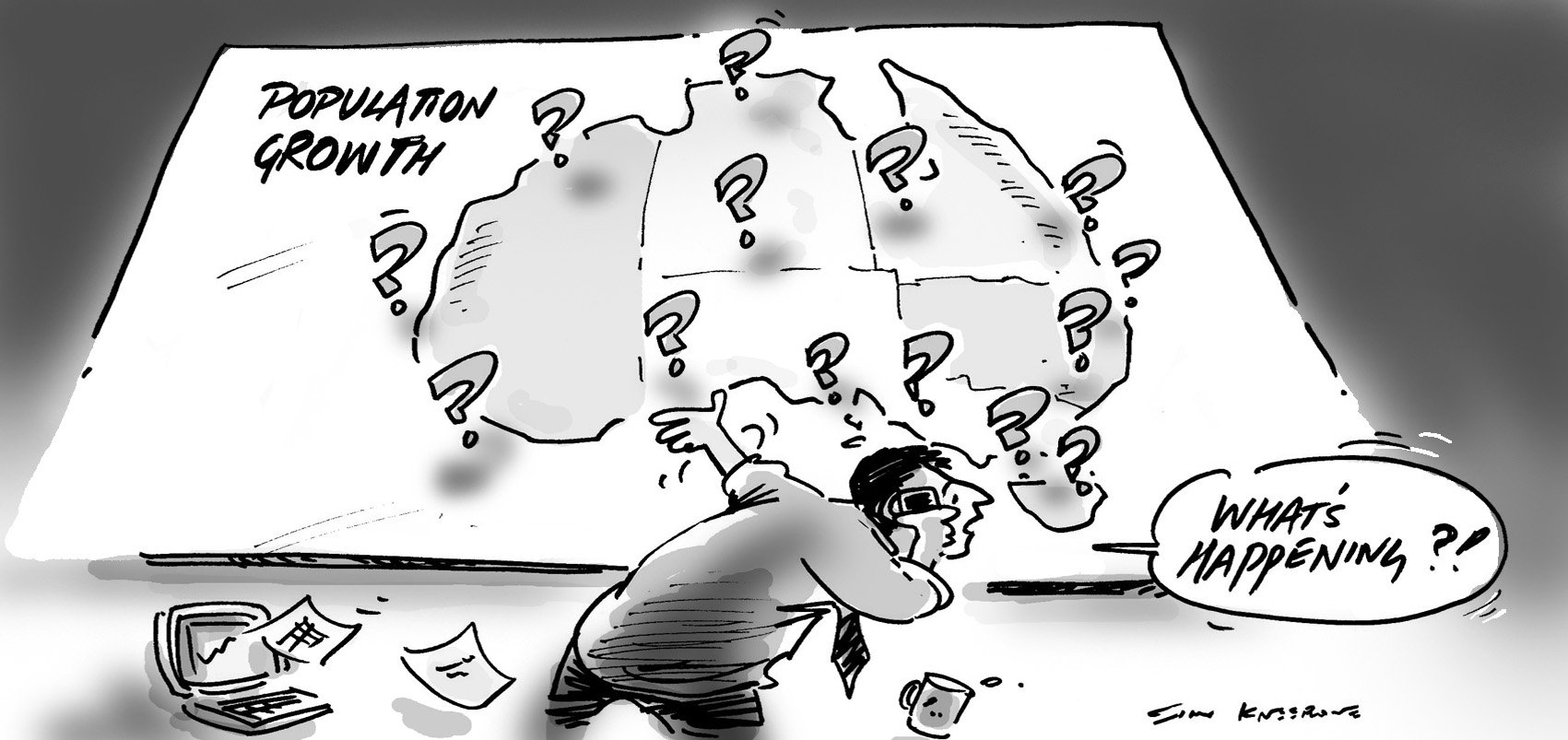Australia is a nation of migrants, and migration has boomed since the end of COVID border restrictions. Where are our new migrants coming from? Glenn Capuano breaks down how our migration "source countries" are changing.
The ABS has just released population estimates by country of birth for the year 2023. Normally we only get an update on this from Census (every 5 years) but in recent years the ABS has started publishing Estimated Resident Population by country of birth.
Australia remains a nation of migrants, with the latest figures showing that 30.7% of us were born in another country. That's the highest percentage nationally recorded since 1892 (yes, that's eighteen ninety two!). The percentage born overseas fell to its lowest level of around 10% at the end of World War II. The postwar migration program bolstered it rapidly and it has been largely increasing ever since. There was a small dip during 2021, when the Census was taken in the middle of COVID border closures and lockdowns.

Where are our new migrants coming from?
Since the end of COVID border closures, our migration has boomed. As reported here last month, the 2022-23 financial year had a record Net Overseas Migration of 528,000 people in just a year. So 528,000 more people entered the country to settle permanently or long term than those who left. The new Estimated Resident Population (ERP) by country of birth figures can give us an idea of where these new migrants are coming from, and how the population of different migrant groups has changed since the 2021 Census.
These figures are a little different from the Census, even in the base year of 2021. For starters, ERP is calculated at June 30th, while the Census is take in early August (August 10th in 2021). And the country of birth question in the Census has a small "Not stated" component, i.e., people who didn't answer the question. These are estimated into the population in the ERP. For this reason, the Census shows Australia's total percentage of overseas-born population as 27.7% in 2021, while the population estimate is 29.3%. For the year ended June 30th, 2023, this has risen to 30.7% of the population, or 8.18 million people.
This chart shows the top 10 countries of birth at the 2021 Census Australia-wide, by percentage of population:

(You can find it on our Australia community profile here. And local versions are available for all subscribing LGAs by suburb and district on your community profile. Many areas differ greatly from this.)
The insight from the ERP by country of birth is showing us what has changed since the Census. These are the top 20 growing countries of birth for Australian residents for the two years ended June 2023.
| Country of birth |
Population increase 2021-2023 |
% increase from 2021 population |
| India |
+133,760 |
19% |
| China |
+71,100 |
12% |
| Philippines |
+53,620 |
17% |
| Nepal |
+48,760 |
37% |
| Pakistan |
+24,270 |
25% |
| Vietnam |
+24,120 |
9% |
| Colombia |
+23,960 |
61% |
| Thailand |
+21,120 |
24% |
| Sri Lanka |
+18,180 |
13% |
| Indonesia |
+16,450 |
18% |
| Hong Kong |
+15,280 |
15% |
| Bhutan |
+15,030 |
118% |
| Brazil |
+14,760 |
28% |
| Afghanistan |
+14,710 |
23% |
| New Zealand |
+14,080 |
2% |
| South Africa |
+12,060 |
6% |
| Taiwan |
+10,750 |
21% |
| Fiji |
+10,460 |
14% |
| Bangladesh |
+9,000 |
16% |
| Iran |
+8,760 |
11% |
Source: Australian Bureau of Statistics: Australian population by country of birth June 2023
India could overtake the UK as the top birthplace outside Australia
India was already showing the largest growth between the 2016 and 2021 Censuses, and in the last two years, added almost twice as many people to the national population as any other country. At this point there are 845,800 people born in India living in Australia. If this rate continues, it will overtake the UK as our number 1 birthplace outside Australia by the next Census. Actually, this is almost certain based on the ABS numbers as they break up the UK into England, Scotland, Wales etc. India is only 100,000 people off the population from England, and all the UK countries are recording declining population in Australia.
China is second with an increase of 71,000 - but the India and China numbers are not really a surprise. Some of the smaller but rapidly growing countries of birth are very interesting.
Nepal and Bhutan are new emerging groups
Nepal was the 3rd largest increase. This has been increasing enormously every Census. Back in 2006 – not really that long ago – only 4,350 people from Nepal called Australia home. By 2021 it had risen to over 130,000, and an increase in the last two years of nearly 50,000 has lifted the population to 179,050. Neighbouring Bhutan is perhaps even more amazing. The tiny Buddhist kingdom only has a population of 782,000 in the country. And over 15,000 immigrated here in the last two years, more than doubling the population in Australia (117% increase). So the estimate now of 27,810 people born in Bhutan living in Australia would equate to almost 4% of the country's population. This is not as high in percentage terms as our Kiwi cousins, who have over 10% of New Zealand's population living in Australia. But it's very high for such a recent emerging group.
Other emerging groups whose populations now look quite different to when the Census was conducted include Columbia (+23,960, or 61% increase), and (outside the top 20 shown here) Mongolia (+6,610 people or 115% increase), and our near neighbours the Solomon Islands (+3,490 people, 92%).
Population born in the the UK, Italy and Greece is declining
At the other end of the scale, the largest declines were people born in the United Kingdom (-14,850), Italy (-8,580) and Greece (-7,000).
Italy and Greece in particular represent an older wave of migrants in the immediate post-WWII period. There has been very little recent migration from these countries. Due to the advanced age of many of those who were born in these countries, deaths are taking a toll on these populations. Many leave second and third generation descendants here of course, contributing to the rich history of our multicultural society.
Understanding international migration at the local level
Unfortunately we will have to wait until the 2026 Census to see how these migration stories have played out at a local level, over the 5-year intercensal period. The figures published now for years other than the Census are at the Australia-wide level only. While fascinating and significant, you can't get any local details from them, and so our community profiles remain based on the Census.











